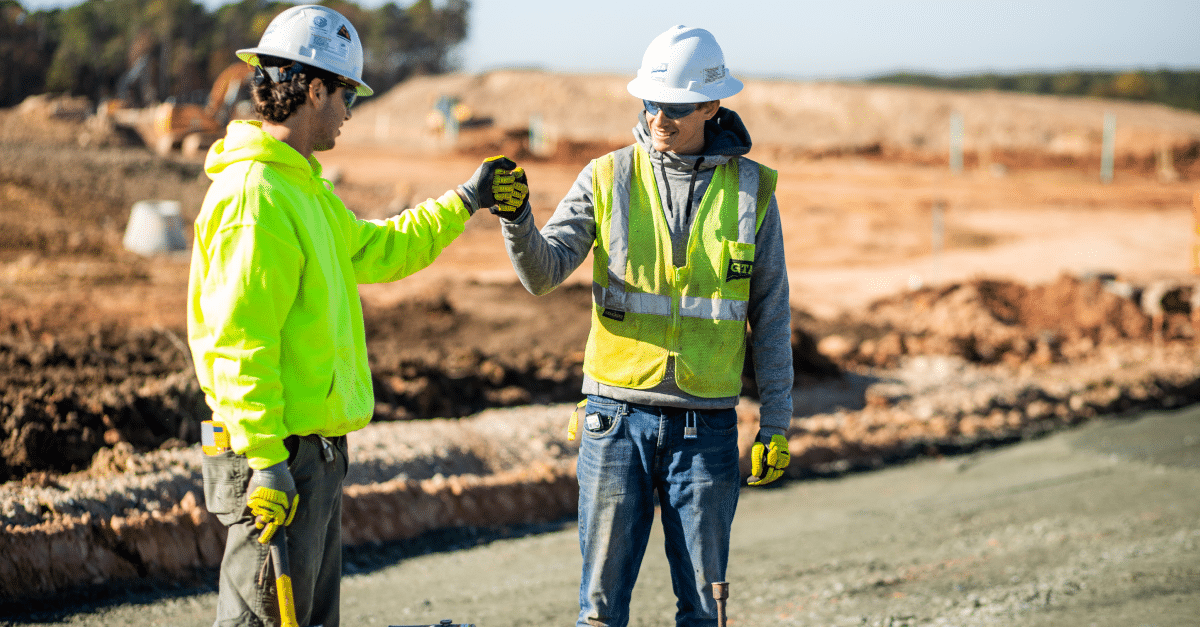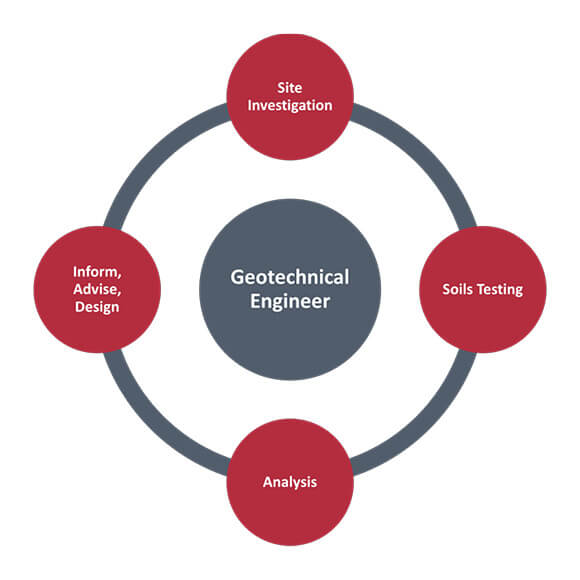Geotechnical Engineering For Construction Projects Things To Know Before You Buy
Table of Contents4 Easy Facts About Geotechnical Engineering For Construction Projects ExplainedGeotechnical Engineering For Construction Projects for BeginnersGetting The Geotechnical Engineering For Construction Projects To WorkThe Main Principles Of Geotechnical Engineering For Construction Projects Geotechnical Engineering For Construction Projects - The Facts
During the investigation, it is crucial to pierce at the needed deepness and the called for number of openings as per the recommendation of the Canadian Foundation Style requirement. Often, the proprietor might save some Geotechnical Examination cost but finish up investing greater than the anticipated throughout the building price.The responsibilities of the geotechnical specialist entail giving product screening for building assistance. Geotechnical Engineering for Construction Projects. Geotechnical designers analyse all the area examination records to make sure that building and construction is going on as per the project spec. Throughout building, a confirmatory test for soil compaction is done on-site to guarantee that no future settlement takes place
After the concrete is put -7 days and 28 days- examinations are performed on concrete samples accumulated from the website to make sure that the concrete poured meets the design requirement. Asphalt core is taken after the Asphalt is laid and compacted to confirm that it fulfills the design criterion. All lab test records are analysed by the Geotechnical Engineer to make certain that it fulfills the job specification.
Examine This Report about Geotechnical Engineering For Construction Projects

Geotechnical design plays a critical duty in making sure the stability of construction tasks. Discover how it influences style and overall task success. Geotechnical engineering is an essential branch of civil design that focuses on understanding the practices of earth products, such as dirt and rock. It involves analysing subsurface conditions to make sure that a structure's foundation or framework is stable and safe and secure.

For a reputable structure and a smooth construction procedure, depend on to provide the competence you require. Call to obtain specialist recommendations and geotechnical services tailored to your following job.
A Biased View of Geotechnical Engineering For Construction Projects
When starting a land growth task, understanding the ground underneath your feet is as critical as the structures you plan to develop over it. Our Geotechnical Design team evaluate the ground, ensuring it appropriates for the proposed development while providing you with the information required to meet your project goals.
Geotechnical Design takes a look at the formation of the ground, as it is the foundation for all projects. Where structures need to be designed with regard to the ground problems; ground problems (e.g., soft ground) might need strengthening relying on the size of the intended framework. Prior to structure, you need to learn about the groundwater, soil framework, and liquefaction chance of your land.
For sites that are not attached on the websites neighborhood authority infrastructure added site investigations would certainly be needed to supply technical inputs for on-site stormwater and wastewater. We have actually experienced Geotechnical Engineers based in each office, supporting your geotechnical demands across the country. Get to out to us to discuss just how we can support your following job.
These records are tailored to fulfill the particular demands of a task and include layout parameters and advice for the building and construction of a variety of man-made frameworks. As giving consultancy services covering areas such as incline stability and load-bearing capabilities for various products, these engineers carry out study and development tasks to boost approaches, devices, materials understanding and analysis covering whole lifecycles.
All about Geotechnical Engineering For Construction Projects

Rates of pay normally boost as your knowledge and abilities expand, with guidelines directing to a graduate beginning wage of in between 18,000 and 28,000 per year in the UK. This rises to 26,000 to 36,000 with a few years of experience and after that reaching 40,000 to 60,000+ for elderly, legal or master designers.
Nonetheless, with the appropriate application it is feasible to grasp the occupation and gain entry to a difficult yet rewarding and vital job. A rock hound would certainly need to retrain to come to be visit this website a geotechnical engineer, my company although there is plenty of cross-over in between the two occupations, which could make this easier - Geotechnical Engineering for Construction Projects. Rock hounds need to have an understanding of soils, rocks and various other materials from a scientific perspective, while geotechnical designers tale their expertise of issues such as dirt and rock mechanic, geophysics and hydrology and use them to design and environmental projects
When beginning out, these designers will certainly have a tendency to work on much less intricate tasks, building up expertise and experience prepared for more difficult job later on. Geotechnical engineers often tend to specialise in certain areas as they expand in experience, concentrating on certain facilities such as railways, roads or water. These designers also collaborate with renewable resource, offshore and onshore oil and gas, nuclear power, and extra.
How Geotechnical Engineering For Construction Projects can Save You Time, Stress, and Money.
The time taken to become a geotechnical designer depends on where you are based, where you research and what degree of education and learning you want to attain prior to entering the office. Generally-speaking it takes 3-4 years to get to the fundamental needs to begin a job as a geotechnical designer.
These operations allow experts to examine a host of soil technicians consisting of weight, porosity, void-to-solid particle ratio, permeability, compressibility, optimum shear stamina, bearing capacity and deformations. If the structure calls for a deep foundation, designers will certainly use a cone penetration test to approximate the quantity of skin and end bearing resistance in the subsurface.
When assessing an incline's balance of shear tension and shear strength, or its ability to withstand and undertake motion, rotational slides and translational slides are typically thought about. Rotational slides fail along a rounded surface, with translational slides taking place on a planar surface area. A professional's objective is to establish the problems at which an incline failure could occur.
Frequently, searchings for suggest that a site's soil need to be treated to enhance its shear strength, rigidity and permeability before layout and construction. When it comes time to set out structure plans, experts are increasingly concentrated on sustainability, more especially exactly how to lower a foundation's carbon impact. One strategy has been to change 20 percent of a structure's concrete with fly ash, a waste item from coal fire power plants.